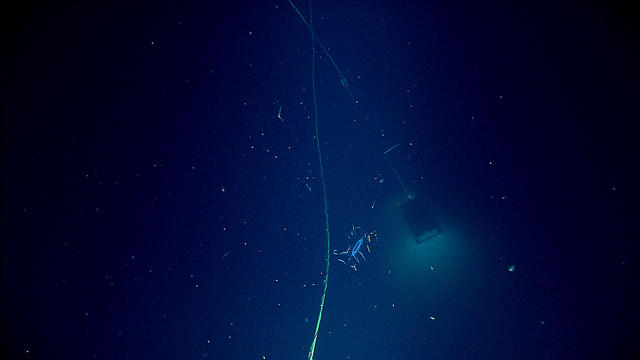New to science: Microbes from the Mariana Trench and the International Space Station
Posted on June 9, 2017 by Anand Jagatia
Each month, the Microbiology Society publishes the International Journal of Systematic and Evolutionary Microbiology (IJSEM), which details newly discovered species of bacteria, fungi and protists. Here are a few of the new species that have been discovered and the places they’ve been found.

The Mariana Trench contains the deepest known location on Earth, lying over 10km below sea level. Back in 2012, James Cameron (director of Avatar and Titanic) piloted a solo expedition to the bottom of the trench in a specially designed submersible called the Deepsea Challenger. The journey took over two and a half hours, and the sub reached a depth of 10,908m. Cameron spent around three hours exploring the bottom of the ocean and collecting samples – which scientists have been analysing ever since.
In the latest issue of IJSEM, a team from Japan and the USA describe the discovery of a new proteobacterium from the material gathered during the Deepsea Challenge expedition. Colwellia marinimaniae was isolated from a decaying crustacean, collected just a few metres from the bottom of the trench. The bacterium is a ‘hyperpiezophile’, meaning it can grow at extremely high pressures.
Also below sea level, although not quite as far, a team of scientists from China has discovered a new species of halophilic archaea in an underground salt mine. Halophilic organisms are able to survive in extremely salty conditions that would kill other forms of life. The authors name the species Halobaculum roseum after the pinkish colonies it forms.
Moving from the bowels of the Earth to a location several hundred kilometres above it, the current issue also features a bacterium named Solibacillus kalamii that was found on board the International Space Station by NASA’s Jet Propulsion Lab. We spoke to one of the scientists behind this microbial discovery – named after the former Indian president and space scientist Abdul Kalam – in a blog post earlier this year.
From the extreme to the not-so-extreme, another team in China has discovered the species Chryseobacterium lineare from a ‘limpid’ (completely clear) stream in the Zhejiang province that provides drinking water. And in South Korea, researchers have isolated the species Sphingomonas aquatica from tap water.
In the animal world, a team from Brazil has found a new species of yeast in the waste of ‘fungus-growing ants’. These insects, called attine ants, cultivate fungus as a food source for their colonies. The authors found a variety of yeasts in the waste deposit of an ant nest, including the novel species Rhodosporidiobolus geoffroeae.
And finally for this month, a group of Chinese microbiologists report the discovery of Acinetobacter larvae from the gut of a moth larva known as the bamboo borer. The females of this species lay their eggs near the base of a bamboo shoot, and the larvae bore a hole inside the stem. They feed on the pulp inside and later emerge from another hole to form pupae, before emerging as adult moths.
The full papers describing these species are available to journal subscribers, but the abstracts are free to read. Articles can also purchased individually with the pay-per-view option.
